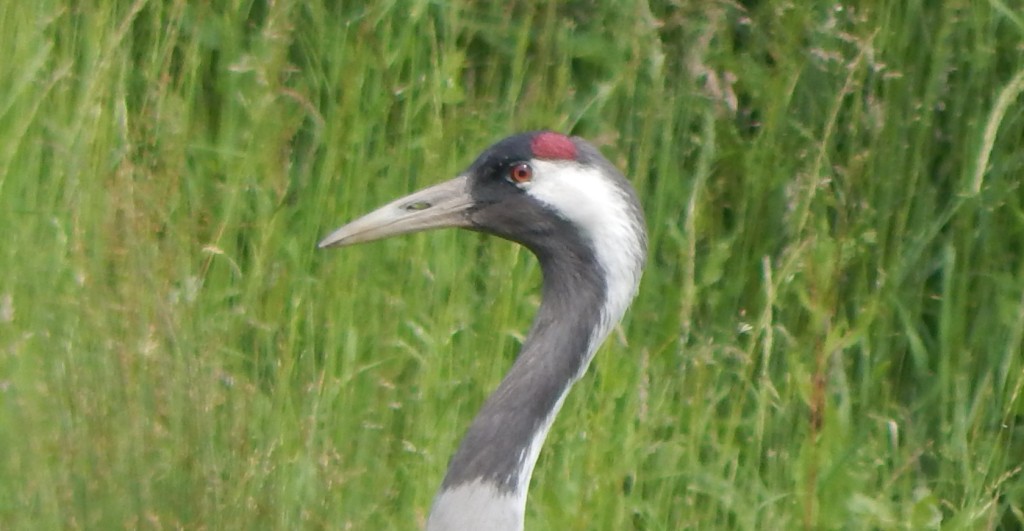
[166] Grus grus, Crane
Introduction
Grus grus, the (Common) Crane, is a very tall, long-legged bird, almost extinct in Britain but part of a reintroduction programme. It is also known as the Eurasian Crane
All fifteen members of the family Gruidae are called Cranes.
Taxonomy
Kingdom – Animals
Phylum – Chordates
Class – Aves (Birds)
Clade – Gruimorphae
Order – Gruiformes (Rails, Cranes and others)
Suborder – Grui
Superfamily – Gruoidea
Family – Gruidae (Cranes)
Subfamily – Gruinae
Genus – Grus
Scientific Name – Grus
Name
Crane is an Old English word that was used for the bird long before the similarly named mechanical lifting devices. The Latin grus is cognate, both coming from Indo-European roots derived ultimately by onomatopoeia from its hoarse cry.
Description
If you only consider still living species, then the taxonomy of Gruiformes is much simpler than the taxonomic tree above suggests. Gruiformes consists of Rails and Cranes and a few fairly obscure small families. But Rails are very different to Cranes.
This means that the closest relatives of Cranes are birds like [152] the Coot, [157] the Moorhen and [293] the Water Rail, that seem superficially to be more like ducks; and they are less related to other long-legged birds like flamingos, storks and herons.
Based on their general appearance, all cranes might be seen as larger versions of Herons. (See [034] Grey Heron and [122] Little Egret) They have longer legs, necks and bills and are considerably larger and heavier.
Grus grus is mainly a plain slate grey coloured with a red patch on the top of its head. The head and upper neck are almost black with white cheeks extending down the side of the neck. The tail has dark coloured plumes of feathers. Male and female birds differ only in size.

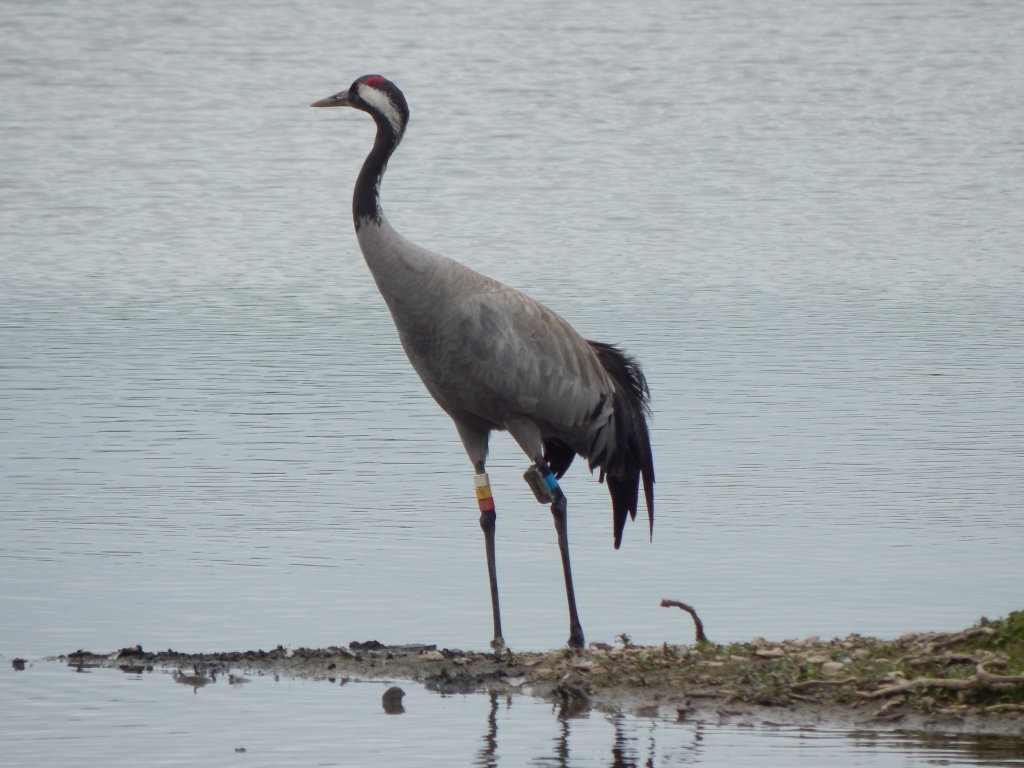
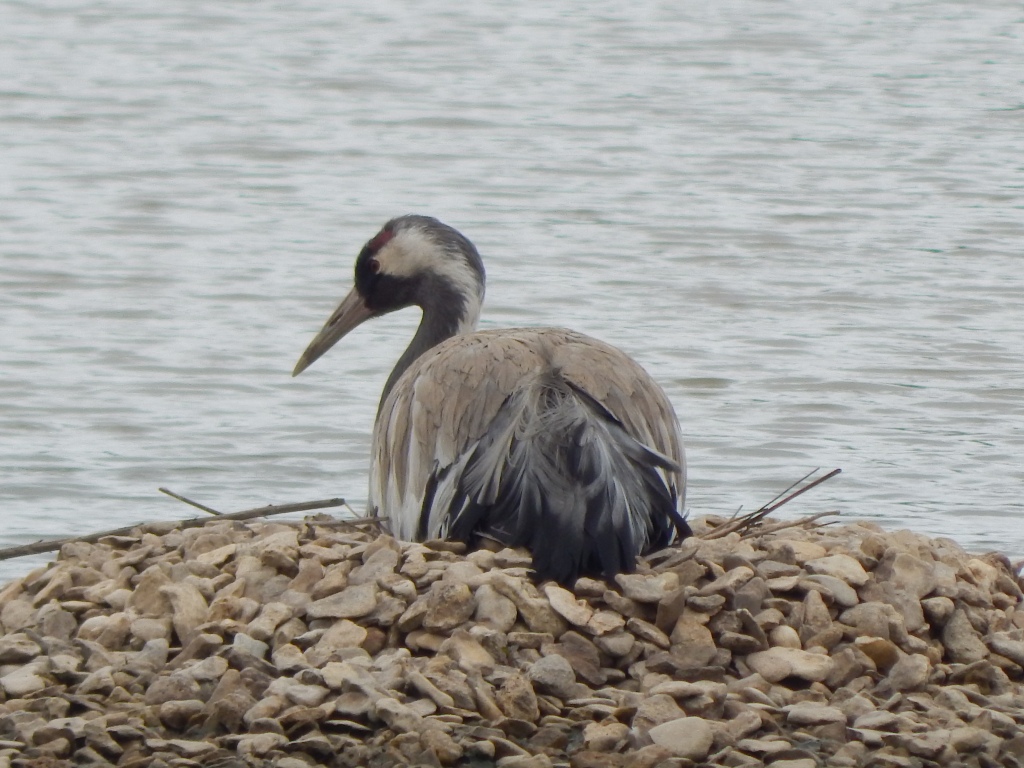

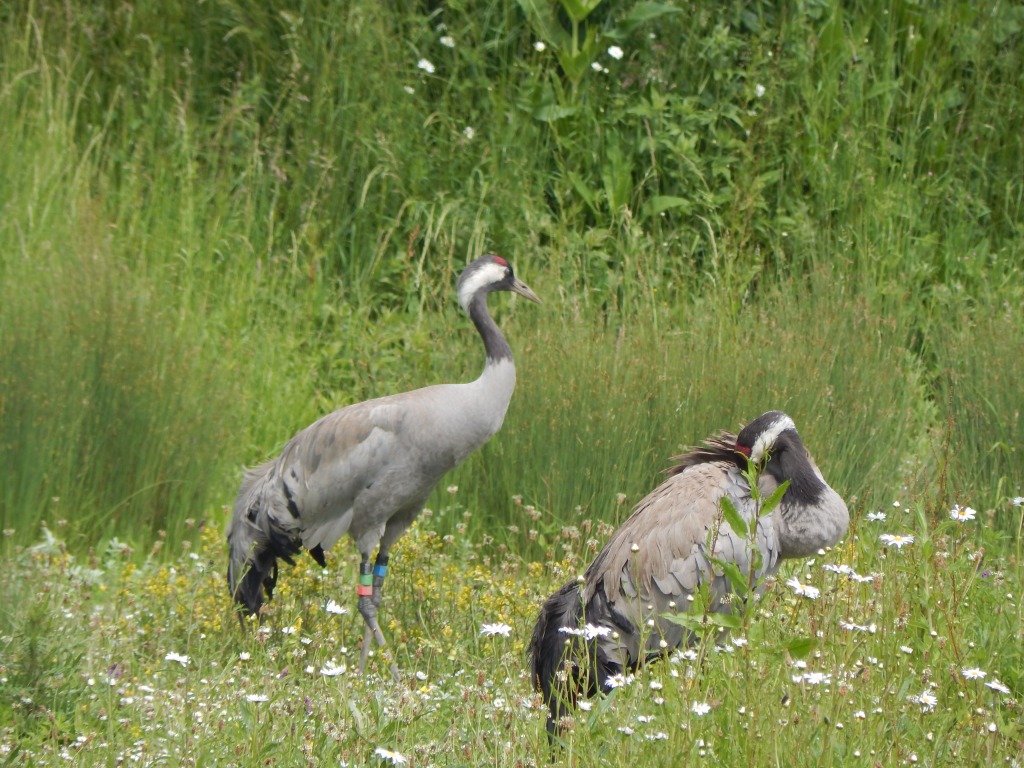
They are omnivorous. They feed in shallow water but also on land
Habitat
They mainly breed in the forests of Russia and Scandinavia, and winter in China, northern India and a few locations in parts of Europe and northern Africa. Until two hundred years ago its range extended through Britain and Ireland.
They also inhabit some marshy wetlands, especially in winter.
There are sometimes a few breeding pairs in Norfolk and an increasing number on the Somerset levels following an extensive reintroduction project as Slimbridge WWT. There is also a recovering population in Germany
Other Notes
The reintroduction programme started with some chicks reared at Slimbridge. From 2010 about a hundred birds have been reintroduced to the Somerset Levels. Some of these birds and other cranes with them now visit Slimbridge and some of these have attempted to breed. The picture below shows the first chick at Slimbridge,
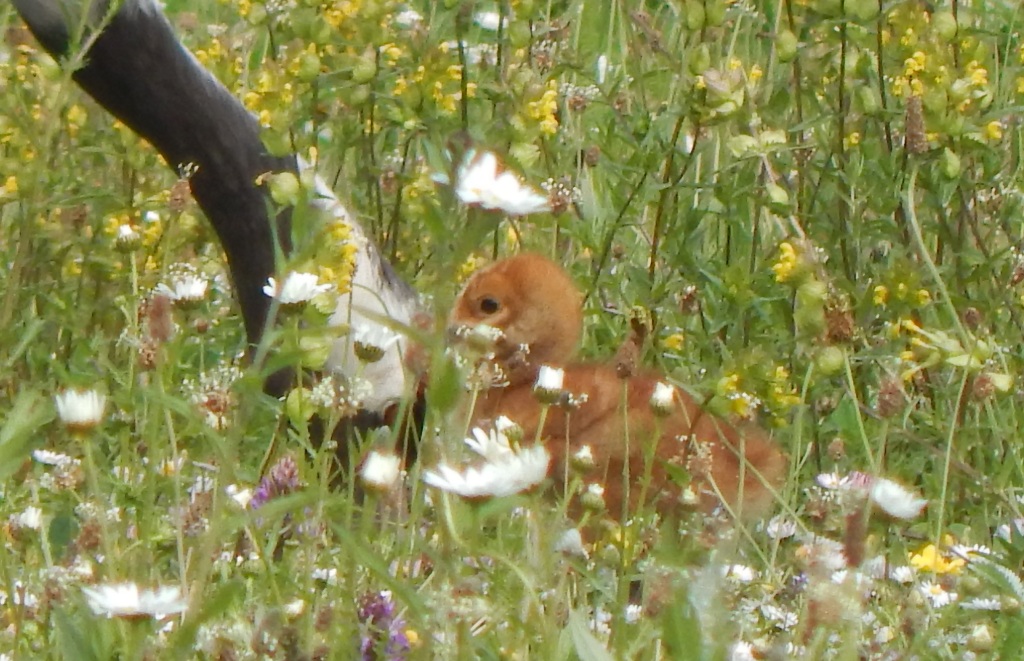
This chick did not survive but there have been successful breeding results in Somerset and in Norfolk
